We hear a lot of things about the Leica M5. “Not real M camera”, “ugly brick”, “Leica‘s biggest mistake” and so on. I must admit that I also neglected this luckless camera over a long period of time. But then I came across a copy that whispered to me: “Take a chance on me.”
The Leica M5 was the successor of the M4 as well as the predecessor of the M4 (read an excellent article by Mike Evans about this one from the Macfilos archives). Sounds weird, sure, but the M5 does have a unique place in Leica’s history. Because it is the camera where Leica ventured a step too far, just to return after a few years, to the well-trodden path.
In a way, this camera from 1971 was too innovative. Which tells at least as much about Leica as it does also about the brand’s customers back then. And the M5 shows a fascinating parallel to the M9, which was featured recently in Claus Sassenberg‘s excellent review of Leica’s (and the world’s) first full-frame rangefinder camera. While the M5 was the camera that nearly killed the company, the M9 was the camera that saved Leica.



The short-lived Leica M5: A history
The Leica M-System had been an immediate success after the launch of the Leica M3 in 1954. Yes, it’s turning 70 this year, and I am still wondering why Leica is generating so little activity to give it a decent birthday party. After the M3 came the M2 (1958) with its lower-magnification viewfinder, allowing 35mm lenses to be used without additional accessories. The M1 was next in 1959, a stripped-down model without a rangefinder, for zone focusing. The M4, launched in 1967, brought some innovations, above all a significant improvement in film loading and rewinding. But essentially, the M4 was, in 1971, still pretty much the camera Leica had launched 17 years earlier. Those were the days…
In 1971, the Leica M5 was not exactly modern
Meanwhile, the camera market had seen no less than a revolution. When the M3 was launched, the rangefinder was the standard 35mm camera. By the early 1970s, the single-lens reflex camera had become the leading camera type. And innovations came fast. Through-the-lens exposure metering, microprisms and split-image devices as focusing aids, miniaturisation of mechanics and electronics, modular concepts with exchangeable backs, motor drives and, in some cases, even viewfinders where what working photographers, as well as discerning amateurs, went for. And almost all manufacturers had reacted to this, abandoning their rangefinder systems and going SLR.
Leica without a rangefinder in the line-up?
For Leica, however, the rangefinder camera was part of the brand DNA. And they obviously felt the need to show something new in the field. The result was the Leica M5, planned to be the basis for a second generation of Leica M rangefinder cameras. It had a remarkably bigger form factor. Maintaining the zeitgeist, the design focused on corners and edges rather than the classic Leica curves. But the Leica M5 had, for the first time in a Leica rangefinder camera, built-in through-the-lens metering! This alone enabled Leica to significantly close the gap on the SLR competition. Or at least that’s what you would think.

Not all customers liked the Leica M5
Unfortunately, the customers didn’t appreciate what Leica offered. The negative comments were manifold. From the initial (and soon corrected) decision to attach the two strap lugs at one side for carrying the camera vertically all the way down to the aesthetics — there was a lot to criticise about the Leica M5. The excellent build quality, the rather ingenious light metering including a display of the selected shutter speed in the viewfinder (!) and other features could not make up for the alleged weaknesses.
How the Leica M5 nearly put an end to a chapter
In 1975, Leica saw no clear way forward for the M5 and the M system in general. The economic disaster was so big that the company wanted to give up the rangefinder system completely. We all know what happened then. The Canadian factory, afraid of losing the future market for their M-Mount lenses, convinced Wetzlar to transfer the manufacturing equipment to Ontario. And after some cost-cutting, the M4-2 came back and was a relative success. Then came the M4-P with the new 28 and 75mm frame lines and finally the long-selling M6.
What a drama around one single camera (the Leica M5) and a single man (Walter Kluck, the boss of the Leica Canada factory and thus the man who kind of saved the M system). I would even go so far as to say that you can see the whole of the sometimes glorious and sometimes tragic Leica history in the M5 and the things that happened around this one model. That alone gives the Leica M5, in my eyes at least, a special place in the history of photography and photographic technology.
In practical use: Shooting with a Leica M5
I can’t claim a great deal of user experience with the Leica M5, as I have had with some other film-loading Leica M models. I have, so far, only shot a few rolls with it. But maybe exactly this guarantees a fresh look at this camera. What I can tell for sure is that if you have ever used an analogue Leica M, you will be immediately at home with the Leica M5. The different form factor makes less difference in actual use than you might think.
Using the Leica M5: Some things worth knowing
Film loading is similar to the M4 and M6 models. The rewind crank, however, is on the bottom, as we have seen on the Rollei 35 or the much newer Zeiss Ikon. Make sure you rotate the crank in the indicated direction, otherwise your film might be ruined — I know what I am talking about.
Attaching the lens and using the viewfinder is the same as with the M4, with four different frame lines appearing automatically — for 50mm (single), 90mm (single), 35/135mm (combined). The 28mm and 75mm frame lines came only later with the M4-P (1981) which was quickly followed by the M6 in 1984. The Leica M5 supports almost all Leica M-Mount lenses ever made. Only some early 21mm and 28mm lenses protrude too far into the camera. Thus, they can creating conflicts with the exposure measuring mechanism.
Wow! Shutter speed in the viewfinder
The most significant difference is, of course, setting the exposure time. For that purpose, Leica tried something new and actually something rather smart. The user selects a value between 1sec and 1/1000sec with a disc that protrudes over the edge of the top plate. In my copy, it has just enough resistance to be easily operated with the index finger while still giving sufficient feedback. What’s more, the selected value is shown in the viewfinder! That’s something I can’t praise enough. I just can’t understand why contemporary Leica M5 users obviously didn’t manage to give enough support to this feature.
Built-in light meter…
The Leica M5 was, as you all know, the first Leica rangefinder camera that didn’t need an external light meter. The through-the-lens measuring works with a cadmium-sulphate element. It is a somewhat awkward design given what the competition was able to produce and develop in the late 60s. According to the manufacturer’s manual, there are issues with Leica’s solution if you shoot in portrait mode. Well, I did not experience them. Generally, I found the light metering to be very reliable. Furthermore, you can see in the viewfinder with a needle not only if the exposure is “perfect”. With a bit of experience, you can also tell the amount of (desired) deviation.
… with a small problem
The only thing is the PX625 battery problem. These 1.35 Volt batteries have not been made for years now. That’s because they worked with mercury, which was banned from such batteries. This is a shame and affects many other photographic devices as well. Among the victims are the Olympus OM-1, the Canon F-1, and the Gossen Lunsix Pro light meter. There are 1.5V batteries with the same dimensions, so you can get your Leica M5 adjusted to the higher current. Or you buy the expensive and short-lived WeinCell zinc-air batteries. I went for this option, and all worked well.




All in all, the Leica M5 is a joy to use, much better than I had expected. I particularly liked the fact that the exposure speed is visible in the viewfinder. And the camera oozes quality, lying heavy in your hands. For me, the smaller standard dimensions of all the other M cameras work even better. But if you have big hands, the M5 might even be more suitable for you. And, of course, I miss the 28mm frame lines, but I know that many other Leica M users hardly ever use them. That’s mainly because they are indeed very close to the margins of the standard .72 magnification viewfinder.
What to consider when buying a Leica M5
Examples of the Leica M5 can be found on the second-hand market easily, but given their relative rarity (only about 33,900 were made according to the Leica Pocket Book, 9th edition) and their growing fan club, they are no longer cheap. Recently CLA’d, they can cost €1,500 and more — less than for a good M6 for sure, but no cheaper than the cost of a working M4. So, an acquisition of a Leica M5 is something you might want to consider carefully.
Spare parts for a Leica M5 may be difficult to find
First, you should be aware that you are buying a somewhat exotic camera. I have not heard about supply problems with spare parts, but I would not be surprised if they occur rather sooner than later. So, there is some risk. If you want to be on the safe side, go for a camera with a new CLA performed by an acknowledged professional. At any rate, do listen to the slow speeds, check the shutter cloth for burn marks, holes, fungus and all the other nasty things. The viewfinder should be free of haze, and all moving parts should be in good working order.
If you are a fan of the 28 or the 75, forget the Leica M5
The other question is where and how you want to use the camera. The Leica M5 is significantly heavier than, say, the M6 (645g vs 575g). And it consumes a bit more space in your bag. And if 28 and 75 happen to be focal lengths that you love (as I do; 28/75 is a great travel combo for me), the M5 might plainly be the wrong camera for you. If, however, size and weight are less important, and you are more in the 35/50/90mm team, the M5 could be an excellent option. I used it with the (much underrated) 90mm Tele-Elmarit (version II), which makes a good fit historically and also in terms of outcome.
At any rate, I would recommend buying such a camera from a reputable dealer. Attic finds often turn out to be no bargain at all because you only see after the first roll what a repairman has to do on the camera. A good dealer, on the other hand, will offer you a 14-day-return option or even a longer warranty. This gives you enough time to try out the camera. In a way, you can buy peace of mind by purchasing from a professional dealer. Bear in mind, however, that some Leica dealers no longer trade in the M5 because of difficulties with repairs and adjustments.
Conclusion: Do we underrate the Leica M5?
To return to the initial question: What significance has this camera, which Hamish Gill over at 35mmc describes as the “odd one out”? Is the Leica M5 better than common prejudice would have it? After my first encounter, I would say, yes. It has a few unique technical features. For example, it indicates the selected shutter speed in the viewfinder. It has TTL exposure measuring. And it feels (if this is possible at all) even sturdier than earlier or later Leica M cameras. So, ultimately, it all comes down to your views on size, weight, and design.





The Japanese made it smaller and lighter; the Leica became bigger and heavier
And here, it becomes obvious why many contemporary commentators were so disappointed when the Leica M5 was released in 1971. In an era when Japanese brands issued ever smaller and more elegant camera bodies, the Leica M5 seemed big, heavy and clumsy. It’s quite possible that even inside Leica not everybody believed in this camera and the rangefinder concept in general. So, the M5 was possibly also denied the necessary marketing efforts (we know that from Leica, don’t we?).
The Leica M5 lacks elegance, but…
And is the Leica M5 the ugly duckling in the camera range? It does look different to all other M bodies, sure. It lacks the elegance of design of a Rollei 35 (1966) or an Olympus OM-1 (1972, released just one year after the Leica M5 on the Photokina in Cologne, initially under the name of M-1, which Leica really, really disliked). Furthermore, it provided to be a cul-de-sac in terms of aesthetics. But is it ugly? The longer I have been using the Leica M5, the rarer I think about this aspect. And the more I started to actually like this camera as a reliable, user-friendly tool. But as always, your mileage may differ.
Let’s discuss…
What about you? Have you ever used or possessed a Leica M5? If yes, what is your experience? If no, is there a particular reason why you never used or fancied one? Do you think the re-introduction of the M4 was the only possible answer to the rangefinder crisis? And, finally, is the Leica M5 in terms of product design really the ugly duckling in Leica’s M line? We forward to your comments.
Want to contribute an article to Macfilos? It’s easy. Just click the “Write for Us” button. We’ll help with the writing and guide you through the process.

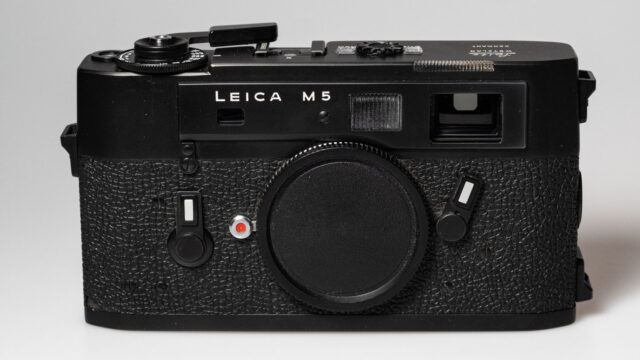

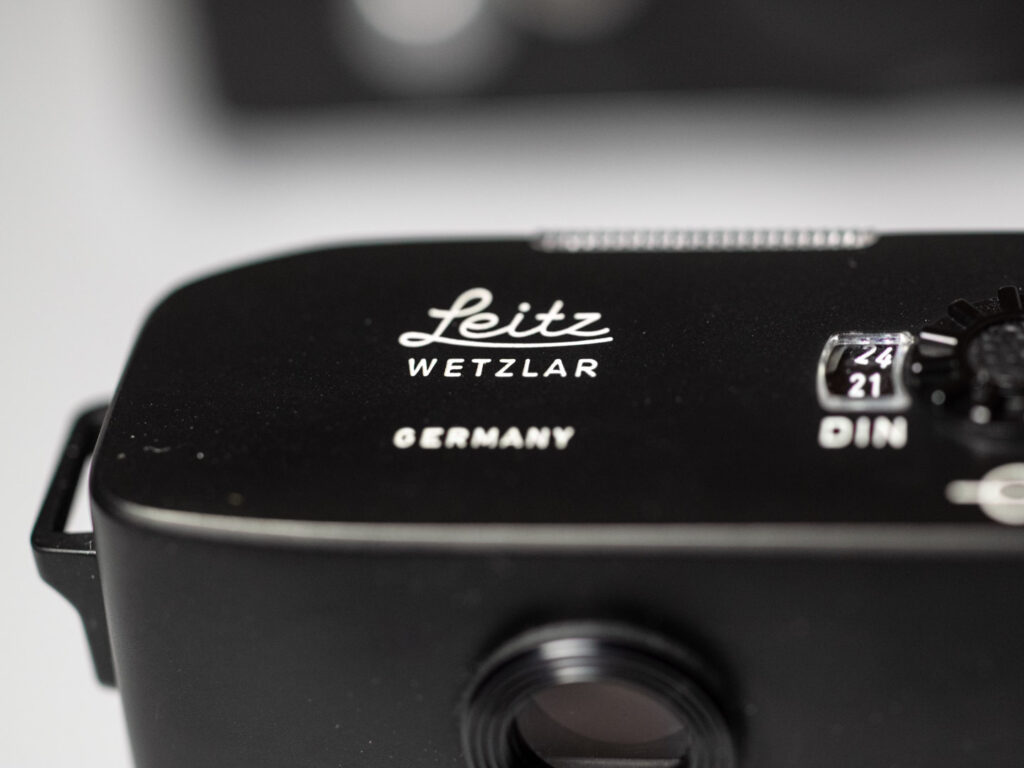


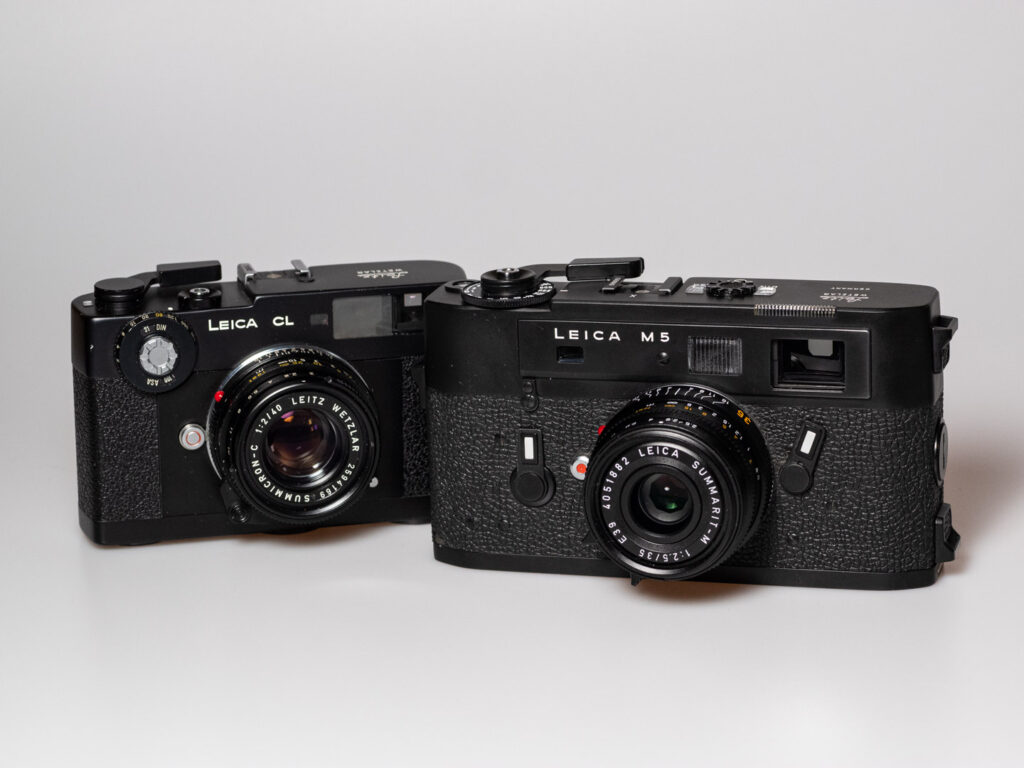
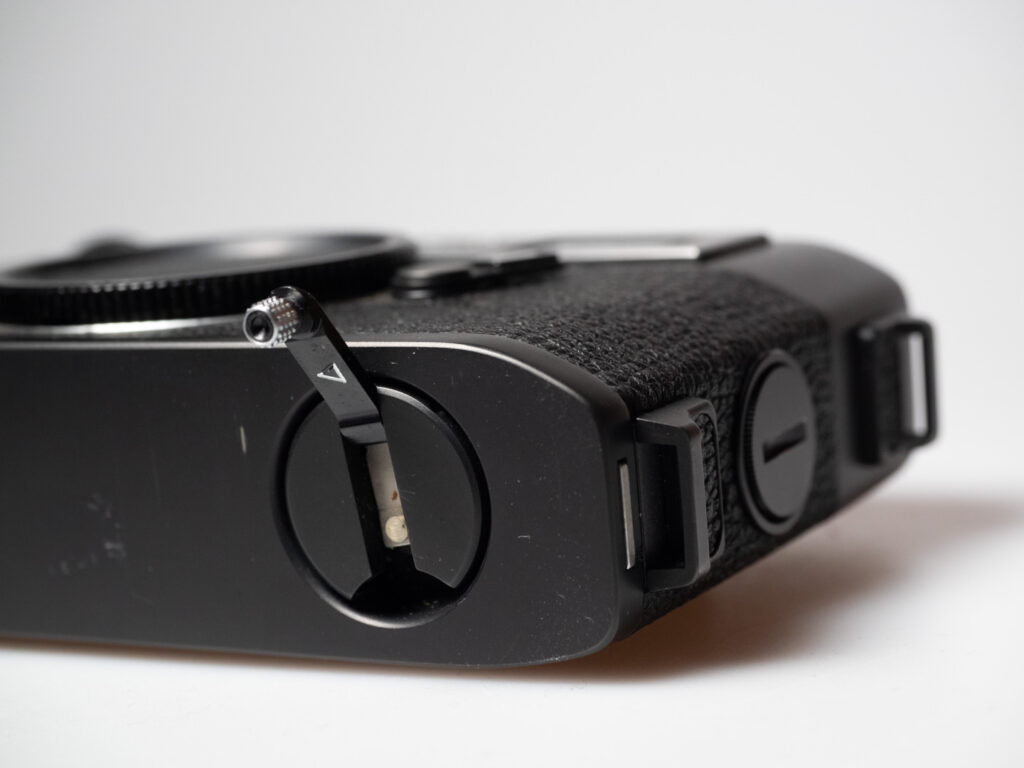

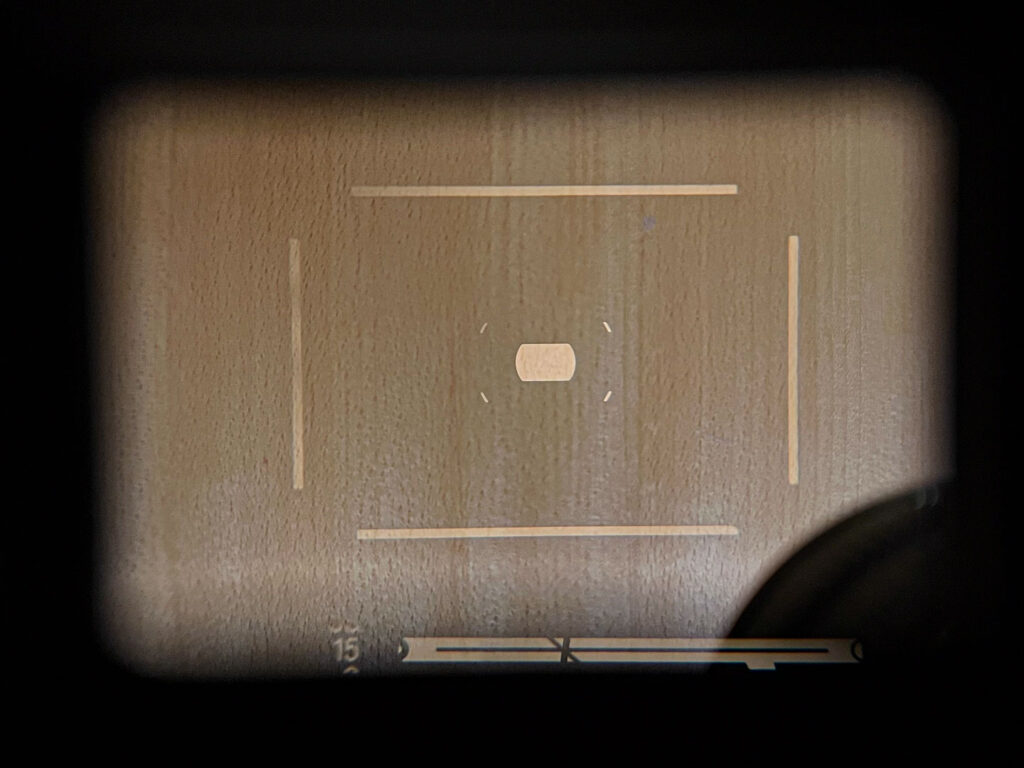



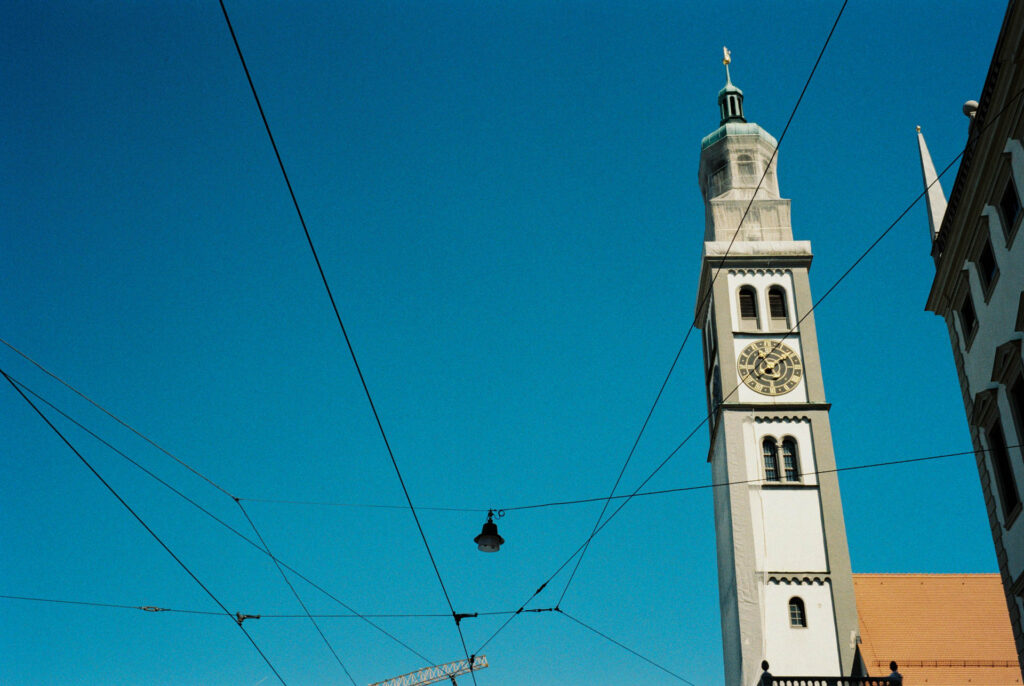




When the M5 came out, I sold one of my M4’s and looked forward to having TTL metering. I disliked the 2-lug arrangement, as it was quite awkward with multi-camera use. The soon to follow 3-lug version was a definite improvement. Most everything else was good, especially the metering, except of course with my Super-Angulon and the Hologon when I got that. The Super-Angulon got ‘adjusted’ (part of the lug that raised the metering arm got ground off) but the Hologon was never put on the M5.
The shape, size and weight didn’t bother me, although I wasn’t overwhelmed by its look. However the new film handling was just not workable for me in the end, and why I sold it after a year. It could no longer accommodate IXMOO cassettes which I used a lot, and it was incompatible with Fuji film at the time. Fuji film spools didn’t have the lugs on the bottom of the spool that the M5 required to rewind film, which I found out about after shooting my first roll of Fujichrome in the camera. Fuji didn’t modify their spools to the ‘standard’ design for, I believe, 5 or so years after the M5 was introduced.
I got an M4-2 as soon as it came out; it turned out that cost-cutting didn’t satisfy me either.
See my M5 article on Macfilos from 29 April 2016 and my joint one with Mike from 2 March 2018. Whatever about the innovative (at the time) meter, the M5 was, for me, just large and clunky and not well balanced in my hands. It was not as well balanced as a Nikon F with a prism finder, but was probably superior to a Nikon F or F2 with a bulky Photomic head. It took Nikon until the F3 to get this right and one could, perhaps, say the same thing about Leica and the M6.
Many brilliant photographs were, of course, taken with cameras without meters. The CL was nice, but, for me, a Leica M is just about the perfect size. A lot of these things are down to taste, of course. I still have my M5 and CL, all part of my collection, of course. It is obvious from your photos, JP, that you have well and truly mastered the M5.
William
.
Just in case anyone thinks I’m ‘dissing’ the M5 – and possibly the CL – I think that they’re both wonderful (..if rather heavy ..that’s the M5, not the CL..) cameras.
They’re both very similar in their features (‘match-needle’ through-the-lens metering at the aperture you’ve chosen, shutter-speed visible in the viewfinder – though the M5 has the shutter speed and the metering at the bottom of the finder, and the CL has them at the top and the right).
They both have a – very useful and re-assuring! – battery test: it’s built into the ‘frame-choice’ lever of the M5, and uses its own little button on the front of the CL.. and both cameras have their film-rewind crank unobtrusively tucked away on the bottom of the camera.
They both have a pair of strap lugs on the left edge of the camera (my M5 is an ‘early’ [1972] version, with just those two lugs, not the later three lugs) ..leaving a clean and uncluttered right edge, with nothing to obstruct your right hand’s access to the wind-on lever, shutter settings or shutter release button.
They both have easy-access (though easier on the M5) ISO settings; 6-3200 on the M5, and 25-1600 on my CL.
(..Gratuitously snarky comment here: note that the ISO 3200 option on the film M5 is HIGHER than the ISO 2500 maximum on the M8 and M9 digital cameras ..you can successfully shoot handheld in lower light with an M5 than you can with those two later digital versions!)
They both – the M5 and the CL – have easy-access shutter speed dials on the top-right, which protrude beyond the camera’s body, making them easy (..easier on the M5..) to turn with just a single forefinger instead of needing a finger and a thumb as on previous Leicas. (The easy-reach slight-overhang shutter-speed dial of the M5 is similar to the easy-reach-overhang frame-counter dial of the earlier Leica M2 ..but is very much more useful, and makes shutter-speed changing so very quick’n’simple ..the smaller vertical dial on the CL, though, is much stiffer and less easy to turn than the M5’s horizontal dial.)
There’s more ingenuity still inside the M5: although Leitz warned that, as J-P describes above, various wide-angle lenses should NOT be used with the M5 ..and not with the CL, either.. because their rearmost glass elements would hit, obstruct, or possibly damage, the plastic pop-up ‘lollipop’ light-sensor.. the M5 has a ..well, not exactly ‘fail-safe’.. mechanical sensor in its lens throat to recognise that a lens is attached. Cleverly, or to accommodate wide-angle enthusiasts, Leitz offered a couple of lenses with a cut-away section at the bottom of their mount – a version of Zeiss’ Super-Angulon 21mm f3.4 – and that cut-away therefore did not push against the metering-pop-up-lollipop release, thus keeping the M5’s metering cell retracted, and so that particular version of the Super-Angulon was and IS safe to use with the M5 (..but not with the smaller – and noisy-shutter – CL, which does NOT have that lens feeler).
As the light-sensor does NOT pop up using the special cut-away version of the Super-Angulon 21mm lens, you DON’T get any light reading at all on the M5 when using it ..but just a quick glance at the sky and your surroundings probably tell you ..1/250th at f5.6 or f8 ..no?
The ‘received wisdom’ is that the ‘Dual Range’ close-focusing rigid 50mm Summicron CANNOT be used with the M5 ..but this isn’t necessarily so! ..My own ‘DR’ has simply had its protruding plastic dot, on the rear of the removable near-focusing ‘goggles’, removed: you can just screw off that plastic ‘dot’ locating guide, or simply file it off or saw it off with a little hacksaw: that doesn’t affect the behaviour of the lens itself at all! ..So my M5 can focus as close as 0.48 of a metre (19 inches) using the close-up-range of the (terrific) Dual Range 50mm.
(..Another gratuitously snarky comment here: note that, as just described, the 1956 50mm ‘Dual Range’ lens DOES work with the M5 ..but NOT with the later M8, M9 and other digital M models, as – crazily! – Leica forgot their heritage, and put a metal plate inside the lens throat of those later cameras, preventing the DR 50 from focusing any further away – in its Normal range – than about 4 metres ..so, pretty much unusable beyond about 12 feet! ..But it can be used only in its Close range with those digital cameras. Crackers, eh?)
J-P mentions, above, “..Make sure you rotate the [rewind] crank in the indicated direction..” on the M5 or you’ll ruin your film. Er, I find not with mine; its rewind crank turns in only one direction, and simply stops if turned in the wrong direction. So maybe that’s another M5 myth ..who knows?
Finally – as I’m running out of space, and you may well be bored with this celebration of the M5 – as J-P mentions, there are modern air-charged ‘Wein’ cells which fit, and will power, both the M5 and the film CL. J-P says that “..the expensive and short-lived WeinCell zinc-air batteries..” don’t last anywhere near as long as the original – now banned – 1.35 volt mercury cells.
But here’s a tip: if you’re not going to use the M5, or CL, for a while, take out its ‘Wein’ cell ‘battery’, and stick a bit of Sellotape, or similar, over the cell’s air-hole. That’ll gradually stop the cell’s discharge until you want to use it again.
I could go on for ages about the solid, reliable, easy-metering M5 ..but I think everyone’s already gone to sleep ..so now I’ll just stop here.
Dear David, thank you so much for your both comments. I never thought you disliked the M5 or the CL. And I know how much you love the CLE! What you are writing clarifies a lot, especially because why I was not able to see the arm with the measuring cell through the mount. That was the mechanical sensor, of course. I did not elaborate on the CL in this article because I covered this one (as well as the CLE) in my M Files series earlier. But you are right, both the cameras belong together in many ways (historically, technically, in terms of design). Finally, the M5’s wonderful shutter speed dial is unique in its usability. That is, the Olympus solution with the ring on the camera side of the camera was at least as good. I always wondered why these concepts were never really adopted. Let’s leave it at that, thanks again, David, for sharing your knowledge. JP
I recently bought a well-kept M5 mainly for the reason that it is the only analogue Leica M that can do double exposures. The technique is somewhat awkward and cumbersome compared to Japanese SLRs (such as the Canon A-1) but it works. I got to appreciate the size and handling of the M5. It fits my rather large hands better than a M6 (for which I bought a grip to improve the handling). However, the batteries are indeed a problem. My M5 has been converted by Leica Vienna to 1.5 Volt. But it is difficult to find batteries that fit into the battery compartment. You have to try various brands and then it’s still a kind of lottery. That is for me the biggest downside of this otherwise fine camera.
Thanks, Tim, for your comment. I hope you have a lot of fun with your “new” M5. If there is a battery brand you can particularly recommend, please do share your experiences here in the comments section. That’s what the supportive and friendly Macfilos community is all about. Hope to see you back here, Jörg-Peter
I think there’s a little bit missing from this story..
Minolta had created the through-the-lens light-metering for the M5, as Leitz (as they then were) had no experience of such things: the ‘Leica’ clip-on light meters were made by a completely separate company (Metrawatt) and supplied to Leitz for users to clip onto their M cameras.
Because of the initial hesitation with take-up of the bigger, wider M5 (built larger to accommodate its new internal – a [double] photocell on a swing-out stick) Leitz thought they should deliver a smaller, simpler model to ‘mop up’ the rest of the – hesitant – buyers.
So two years after the launch of the M5, they produced, in 1973, the little Leica CL (‘Compact Leica’) which had the same internal light-metering, as the entire camera was built for Leitz by Minolta in Japan!
The CL was an immediate success: it had the same accurate through-the-lens light-metering, was two-thirds the size – and weight! – of the bulky M5 (see the photo of the two of them, above) could take almost all of the same lenses (not the ‘Dual Range’ 50mm close-up Summicron, nor others with ‘goggles’, such as the ‘goggled’ 35mm, because the additional external lenses don’t match the spacing of the rangefinder windows of the CL), although it didn’t have rangefinder lines any wider than 40mm or longer than 90mm.
However, that didn’t dissuade buyers, as Leitz had always offered a whole range of external viewfinders for other lenses, and all Leitz lenses had a depth-of-field scale on them for ‘guesstimating’ distances and focus.
Leitz, of course, had to pay Minolta for making the very popular CL, while it undercut the price of their own M5 – for which they had to compensate Minolta for providing the TTL metering!
The CL really diminished sales of the M5, till it was uneconomical to produce the bigger, less popular camera, so Leitz stopped sales of the CL, hoping to prop-up the M5 ..but that didn’t happen.
It was an incompetent strategy to sell BOTH the bigger, heavier ‘professional’ M5, while also undercutting its sales with the smaller, lighter, equally capable CL. This almost bankrupted Leitz, but the revival of the previous M4 ..now made more cheaply in Canada.. and being sold as the ‘new’ M4-2 (‘second version’) managed to save the company.
(Does that ring a bell? While selling the M8, the then Leica CEO let slip that a “full-frame” M9 would be coming soon ..so sales of the M8 and M8.2 just fell off a cliff.)
The M5 is a great – but heavy-ish – rangefinder camera, as noted above. But it was, to all intents and purposes, killed off by the smaller, nimbler CL ..which was then re-launched by Minolta themselves in 1980 as the even more capable ‘Minolta CLE’.
Sorry but not accurate.
My good friend Knut Kuhn-Leitz played a large part in bringing the CL to market. He worked with Minolta in Japan on this.
My dad bought the M5 when we were on a trip to Germany soon after it came out. We graduated up from our pair of M3s. We had used the new M5 at a Leica School we attended in Wetzlar, and fell in love with it. The M5 was quite a revelation, and the built-in meter was much appreciated. We shot Kodachrome back then, and you damn well better have metered properly using it, as it was very unforgiving. My other most used camera at the time was my Black Paint SL. which was quite a bit bulkier. At one point, I also had a silver chrome M5 as well. My dad’s M5 disappeared after he passed away, and I think his widow sold it without giving it back to me. Oh well!
When the M6 came out, that became my go-to. I was at the Photokina with my dad when it was introduced, and when I returned home, I called New Jersey and told them I had to have one. I was a new Leica dealer back in those days. Years later, I had Stefan Daniel take a look at my M6 and he confirmed it was indeed a Photokina camera. Stefan was part of the camera service team that made sure all of the M6 cameras were ready for the show. I will never sell that camera! It was fun to be in Wetzlar with all of the “influencers” re-discovering the M6. I wanted to tell them, I was there at the get-go!
Dear Bill, for a 1984(?) Photokina exhibition model of the M6, thus one of the earliest ever made, I would even trade in the M5 🙂. But seriously, it is fascinating what you are writing. I can imagine that the M5 meant a major improvement for all slide film shooters (and it were many back then…). And I still don’t understand why it is so neglected or even depreciated by many Leica “experts”. JP
I still have my two-strap-lug, black M5 that I bought from a fellow photographer in 1977. A great camera that fits perfectly in my large hands and is always easy to use. One silver M5 and one 50 Jahre M5 are my backups.
Great to read, Gordon R. Brown, that there are some more active M5 users out there. I wish I had discovered it years earlier. I hope your beautiful kit will give you pleasure for years to come. Jörg-Peter
The narrow angle meter in the M5 is far more precise for checking light values in a scene than the M6/M7/MP meter. It’s really great!
The frame mask from the M4-P can be swapped in by a technician if one needs the 28 & 75 lines. One loses the meter marks for the 50mm, though.
Dear Emanuel, thanks for adding this. I also found light metering to by very reliable. And good to know that the “missing” (if ever) frame lines can be added. Jörg-Peter
The Leica M5 is a superb camera and worth considering if a good example is sourced. However, they’re all ‘getting on in years’ and sourcing replacement deteriorating parts is difficult. Anyone considering acquiring an M5 should first consider accessing learned articles / forum posts detailing others’ feedback especially regarding servicing and repairs difficulties. Google ‘Leica M5: Merits and Demerits’ for users’ experiences. Yesterday I spotted a well used M5 listed on a well known UK dealer’s website and was tempted to ‘take a chance’ with a view to replacing its very battle scarred, ‘wabi sabi’ vulcanite myself. Dealer is offering a 6 months guarantee but after reading the ‘Merits and Demerits’ contributions / experiences I decided to give it a miss.
Dear Dunk, thanks for adding to the article with this comment. Repairability and spare parts procurement are certainly the critical points when it comes to buying an M5. It is definitely a good idea to make a well thought through decision. The outcome can, in my opinion, both be yes and no. Maybe some good copy at a good price pops up for you one day. If not: You will make wonderful images even without an M5 😉. JP
As a Leica using Pro I first tried a M5 out at the 1972 Munich Olympics where I was one of the official photographers and Leica had been appointed as the official camera of the games. Leica offered me free loan of two M5 bodies and as many lenses as I wished to borrow, but I was unsure and decided to decline and continue using my own equipment. Since then however I have owned, used and very highly rated several M5’s and still have one of the mere 5000 ltd 50year edition threelug versions. More to the point I contend the M5 was a far better camera than even the later M6, it was also the World’s very first TTL exposure reading rangefinder camera, and we Pro’s bought and loved it. What killed it was the ded in the wool amateur buyers not prepared to accept change. That in turn meant it was not just our loss but also theirs and then worse still of course Leica’s, however it was, and still is a great camera to use, and for me much preferable in three lug form to any of the M6 variants.
Wonderful to read from you, Don. It’s always like reading a history book when you share your memories (in fact, it is much more interesting). I also heard that it were the amateurs who didn’t bond with the M5. And with (more or less) only enthusiasts using M Leicas nowadays, it is no surprise that the M5 leads a kind of niche existence to this day. I’m glad to hear that Pros of your league have not forgotten this interesting camera. All the best for you, Don, and I hope to read from you soon again! Jörg-Peter
M5 was actually my first Leica; I bought a user of course because of $ back then. I was coming from Nikon SLRs and wanted something that felt about the same in my hands, and had an internal light meter to ensure my comfort level. It was a great camera in use, and I shot with it for several years until the M6 was on the market. My back-up camera was a Minolta CLE, and the Nikon was relegated to architectural or tripod use (I was really into wide angles in those days).
Really no complaints against the M5 at all as a user. A bit longer shutter button throw, because of the meter arm, but that hardly counts. Ditto use of my 90/4 Elmar collapsible, but my 21/3.4 was modified to fit before I bought it.
Thank you for the article, Joerg-Peter! Memory lane.
Thank you Ed, for your kind comment. I can only reply today, sorry, but I was happy to read that the M5 means quite something to many of our readers. I imagine the M5/CLE combo must have been wonderful. All the best, Jörg-Peter